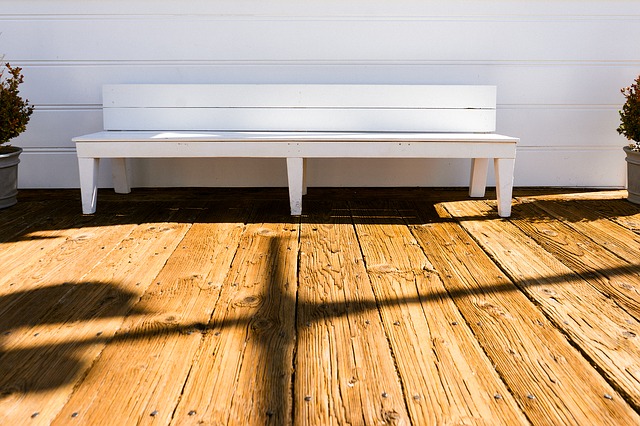Installing a new deck is an exciting and rewarding project. If you are replacing an existing deck or building a new one, there are many factors to consider when laying your deck. And foremost among these should be your choice of decking material.
Composite decking is a great alternative to timber. It looks great, is long-lasting and requires very little maintenance compared to timber. However, before you go ahead with a decking installation project, there are a few things you should know about how composite decking materials differ from timber.
Composite decking boards are made from a mixture of reclaimed timber and recycled plastic and therefore have different characteristics to timber decking materials. Even the most experienced builders or carpenters can easily come unstuck if they are unfamiliar with how composite materials behave. So, to help you get the most out of your decking, we’ve pulled together a list of essential composite decking installation do’s and don’ts.

The do’s of composite decking installation
Use the right tools for the job
Like any DIY project, using the right tools for the job can make a difficult task easy, or an easy task difficult. You wouldn’t use a hand saw to cut through steel, and similarly you need an appropriate blade for cutting composite boards.
Composite boards are harder and denser than regular timber due to the plastic component. When cutting composite materials, use specific saw blades, such as those made by Diablo, that are specially designed to cut through tough composite boards. Using saw blades designed for timber might be fine for the first few cuts, but generally they will quickly go blunt before the job’s end. For that reason, we recommend using the appropriate composite-cutting blade for your application.
Leave expansion gaps
Composite boards can expand and contract along the length of the board with changes in temperature. Unlike timber, where you want to pull the boards in as tight together as possible, you need to leave some gaps when installing composite decking. Regular timber has a 10-15% moisture content when first installed. As the boards dry out, they shrink, which results in gaps opening, cracking and splintering.
With composite decking, appropriate gapping the ends of boards is key to a successful installation. Being aware of the temperature during installation and the estimated maximum temperature for the area is imperative. If you are installing on a hot day, the boards will likely have already expanded. Therefore, you should keep the gaps very small, or evenly butt the boards together. When the temperature drops and the boards cool, the gaps between the boards will open up.
Too often we see people gapping their boards on warm days, then come back the morning after installing their deck to find the gaps have opened up to be too large. It is important to understand how composite decking boards behave to ensure your gaps aren’t too big or too small.
Allow adequate ground clearance
Ensuring ample ground clearance is often a prerequisite from composite decking manufacturers to ensure warranty guidelines are adhered to. Ground clearance is mainly to allow adequate airflow beneath and around the boards, which helps to cool the boards on warmer days. If a deck does not have adequate ground clearance or the boards are too close together, expansion outside of regular operating parameters may be seen, leading to issues with the deck and integrity of the fixings.
Predrill and precountersink
As composite decking boards are much denser than timber, it is necessary to predrill and precountersink the boards if top fixing. As they do not have a fibrous makeup like timber, failure to countersink will result in the boards mushrooming over screw heads. Just like working with premium hardwoods, composite boards will need to be predrilled. Failure to predrill will increase the likelihood of splitting or cracking a board.

The don’ts of composite decking installation
Don’t use a nail gun
As mentioned above, composite boards need to be predrilled to reduce the likelihood of splitting or cracking. For the same reason, nail guns are not recommended for installing composite decking. Nails also aren’t a reliable method of securing composite boards because the expansion and contraction of the boards can work the nails loose. Instead, we recommend using high-quality stainless steel or galvanised screws, depending on your installation.
Don’t cut the boards at different times of the day
Due to the expansion and contraction of the boards, we highly recommend cutting all boards at the same time, where possible. If you are cutting boards at different times of the day when the temperature is different, you will find they will be different lengths. To avoid this, it is recommended to layout your deck, fasten the boards with a slight overhang then trim them at the same time.
Since composite materials behave differently to timber, it is important to understand and account for their specific characteristics. If instructions are adhered to there is no reason anyone should experience any issues during a composite decking installation. Like anything, it is a matter of working with the product at hand to ensure the best outcome. The tips mentioned above are a great start on the road to success for composite decking installation.

